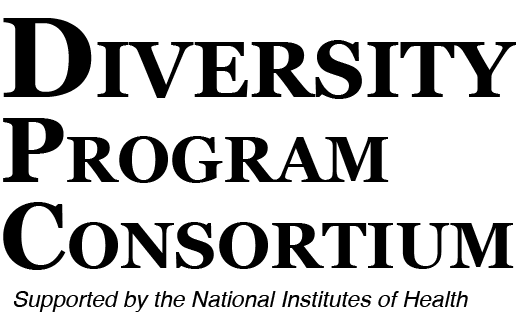



By Jenn Ho
September 2016
The importance of “science identity” as an influence on student persistence in the sciences is rooted in social influence research. Within this framework, science identity is linked with self-efficacy in the underlying theory that if science students perform as per their academic institution’s expectations, they will be given positive feedback from the community, barriers will decrease, and they will be encouraged to continue. As a result, science students who are “successfully” socially influenced are more likely to be people who receive encouragement from their academic community members, who have high self-efficacy and who feel they can do scientific work (Estrada, Woodcock, Hernandez & Schultz, 2011).
The work of Kelman (1956, 2006), suggests that an individual may be tied to the social system of an academic institution through adopting the rules, roles, and/or values of the social system, and that the social influence process will vary depending on that person’s orientation to the social system. Identification is a process that occurs when an individual’s identity is incorporated into his or her activities within that social system. As such, the social system partially defines the individual and where they feel they belong. While individuals are not necessarily conscious that their behavior is dependent upon maintaining satisfying relationships with a social group, it is suggested that if they were to shift their identity away from the group, their behaviors aligned with group norms and expectations would discontinue. It is therefore posited that the more a person identifies as a scientist, the more likely they will behave in ways that are consistent with the roles and expectations of a scientist and to pursue a scientific career.
A host of empirical evidence suggests that “science identity” is a critical component of URM student success in the sciences. Carlone and Johnson (2007) found that by increasing students’ tendencies to feel, think, behave, and be recognized by meaningful others (e.g., faculty role models) as a “science person,” URM students have a much greater chance of believing in their abilities to succeed in the sciences. Estrada and colleagues (2011) found that long-term integration into an academic social system does not solely rely on students’ sense of self-efficacy, but that the identification of URM students as scientists and their endorsement of the scientific community values are more highly related to their continued intention to stay in the sciences. Chang and colleagues (2012) also emphasized these findings in their examination of 2004 and 2005 HERI data reporting that being highly identified with biomedical and behavioral science (BBS) goals significantly improved the chances of URM students in persisting in their BBS major. Additionally, students who developed peer networks through pre-professional or departmental clubs and organizations were more likely to persist in their initial BBS major.
Evidence also suggests that scientific identity among students from under-represented groups is mitigated by stereotype threat, or negative racial stereotypes concerning the intellectual ability of disadvantaged groups. This line of research has shown that when students receive signals that convey they do not belong in the scientific community, their performance declines (Murphy, Steele & Gross, 2007). Steele (1997) argues that stereotype threat prevents or breaks down a person’s identification with academics while heightening their ethnic or gender identity, and that this can have a detrimental effect on a student’s academic identity, perseverance, and performance. Chang, et al. (2012) also found that the positive association between URM students’ domain identification and their persistence in a BBS major was moderated by relatively high frequencies of negative racial experiences on campus.
This base of evidence underscores not only the importance of bolstering science identity amongst URM students, such as in building supportive peer networks, improving faculty mentorship, and addressing faculty pedagogy to consider racial/ethnic diversity in the classroom, but also the need to implement specific strategies to reduce URM student exposure to racial insults, threats, or hostile interactions, to be singled out because of race/ethnicity, and/or have instructors who express stereotypes about racial/ethnic groups (Chang, Eagan, Lin, & Hurtado, 2012).
References
Estrada, M., Woodcock, A., Hernandez, P. R., & Schultz, P. W. (2011). Toward a model of social influence that explains minority student integration into the
scientific community. Journal of educational psychology, 103(1), 206.
Kelman, H. C. (2006). Interests, relationships, identities: Three central issues for individuals and groups in negotiating their social environment. Annu. Rev.
Psychol., 57, 1-26.
Kelman, H. C. (1958). Compliance, identification, and internalization three processes of attitude change. Journal of conflict resolution, 2(1), 51-60.
Carlone, H. B., & Johnson, A. (2007). Understanding the science experiences of successful women of color: Science identity as an analytic lens. Journal of
Research in Science Teaching: The Official Journal of the National Association for Research in Science Teaching, 44(8), 1187-1218.
Chang, M. J., Eagan, M. K., Lin, M. H., & Hurtado, S. (2011). Considering the impact of racial stigmas and science identity: Persistence among biomedical and
behavioral science aspirants. The Journal of higher education, 82(5), 564-596.
Murphy, M. C., Steele, C. M., & Gross, J. J. (2007). Signaling threat: How situational cues affect women in math, science, and engineering settings. Psychological
science, 18(10), 879-885.
Steele, C. M. (1997). A threat in the air: How stereotypes shape intellectual identity and performance. American psychologist, 52(6), 613.
Suggested citation
This brief literature review was first published as a DPC newsletter article at https://www.diversityprogramconsortium.org/newsletter/posting-view?digest_id=46514&posting_id=60775